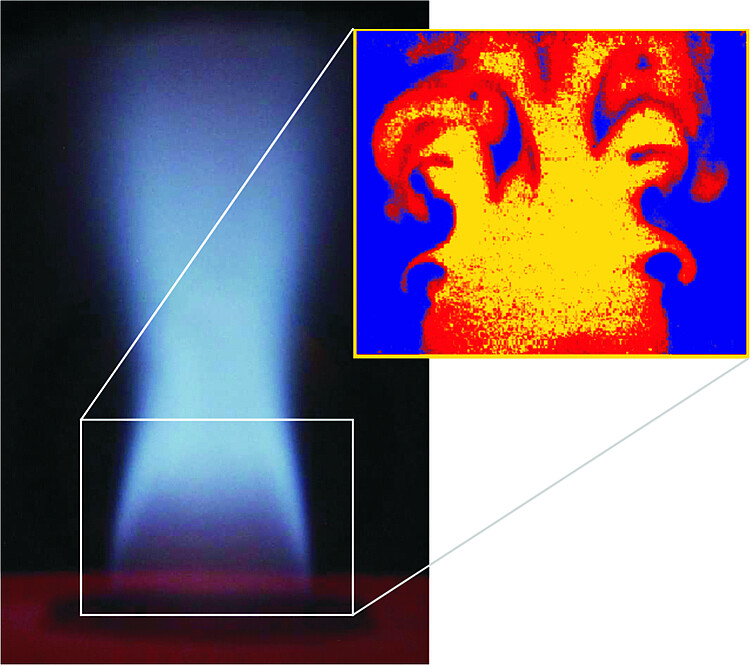Laser Diagnostics in Turbulent Combustion Research

| Team: | Prof. Dr. Friedrich Dinkelacker; Panagiotis Ignatidis, M. Sc.; Henrik von der Haar, M. Sc. |
| Year: | 2016 |
To investigate details of the turbulence-reaction interaction in flames the probing techniques have to be non-intrusive. With planar laser-diagnostical approaches this is possible with high temporal and spatial resolution, such that also fast and small scale processes can be visualised for instance inside turbulent premixed combustion. In Figure 1 (right) an example is shown where the instantaneous temperature field inside a plane cut through the turbulent flame is measured in a quasi-frozen state, due to the very short laser illumination within 10 ns. In contrast to photografic imaging the strongly localised turbulent eddies and their influence on the combustion is clearly visible.
With combined measurement techniques also the turbulent 3dimensional flow field can be measured, partly even in conjunction with the flame temperature. For that the method of Conditioned Particle Image Velocimetry (CPIV) has been developed in the research group (in earlier years) allowing the conditioned evaluation of the turbulence quantities both in the unburnt and the burnt part of the turbulent flames. With such methods not only increased insight into the complex flame processes is possible, but also detailed measurements for validation purpose is possible to develop new and better numerical models and validate the application of them within advanced computational fluid dynamics programs for such reactive flow systems.
The focus of research lies on turbulent premixed and partially premixed flames in the thermal power range between 10 and 200 kW. Influences of burner geometries, fuel mixture parameters and exhaust gas recirculation can be investigated.
Figure: Flame structure of a bluff-body stabilised turbulent premixed flame
(Planar Laser-Rayleigh-Thermometry, False color representation: blue= cold, orange = hot) Dinkelacker, Soika, Most, Höller, Leipertz Proc., 11th Int. Heat Transfer Conf., Korea, Vol. 7, pp. 373-378 (1998)


